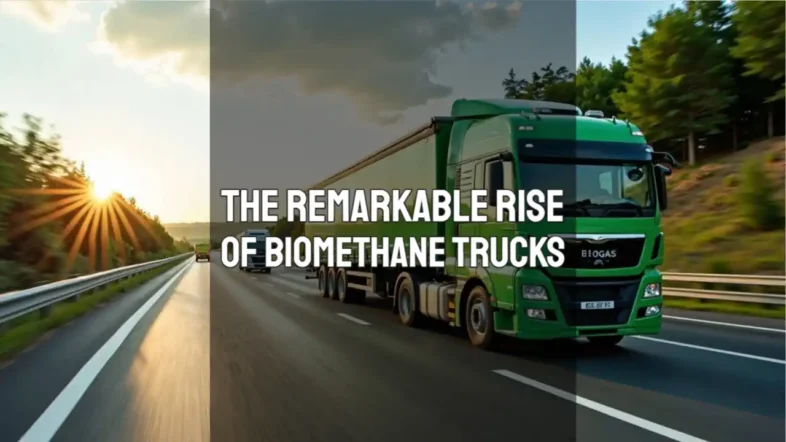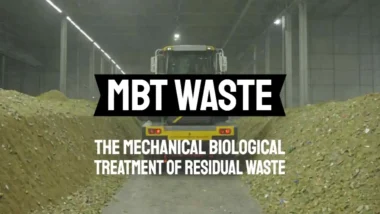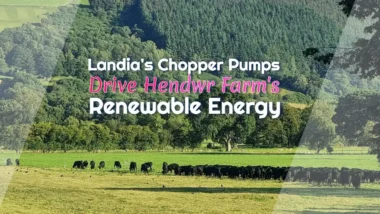The Evolution of Biogas as a Transport Fuel: Biomethane Trucks From Early Promise to Mainstream Adoption (2006-2025)
The heavy goods transportation sector stands at a crucial turning point in 2025, with major truck manufacturers finally embracing biomethane-powered vehicles in their standard product ranges.
This development marks a significant milestone in the industry's journey toward sustainable transport, fulfilling the potential identified in a groundbreaking 2006 National Society for Clean Air and Environmental Protection report.
Historical Context and Technical Foundation
In 2006, when a group of forward-thinking organizations (including the National Society for Clean Air and Environmental Protection) identified biogas as a promising transport fuel when purified to make it into biomethane, a gas that is for all purposes the same as the “natural gas” in all our gas mains (gas grids).
The research highlighted several key advantages:
- Substantial renewable resource potential: The UK alone generated approximately 30 million dry tonnes of suitable waste material annually, capable of producing 6.3 million tonnes of oil equivalent methane gas
- Significant emissions reduction: Biogas-fueled vehicles demonstrated potential CO2 reductions of 75-200% compared to fossil fuels
- Dual environmental benefit: Using liquid manure and a wide variety of other organic wastes as feedstock provided additional climate benefits by preventing methane emissions from untreated waste that might otherwise be most likely to go to landfill
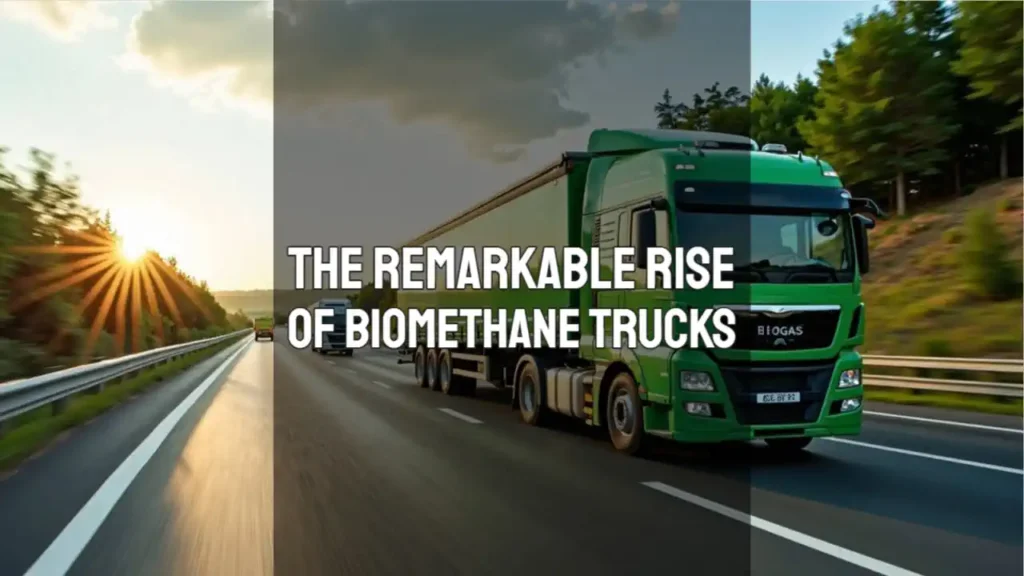
Key benefits of biomethane trucks that the report identified included:
| Advantage | Details |
|---|---|
| Renewable Resource Potential | ~30 million dry tonnes of UK waste annually could yield 6.3 million tonnes of biomethane (oil equivalent). |
| Emission Reductions | Up to 75-200% lower CO2 emissions compared to diesel. |
| Dual Benefits | Utilizing manure as feedstock also mitigates methane emissions. |
Technological Advances in Biomethane Production (2006-2025)
Improvements to Biogas to Biomethane Fuel Production Leading to Biomethane Powered Trucks
Over the intervening two decades “biogas trucks” (short for biomethane powered trucks, also known as “biomethane trucks”) have become much more viable as the biogas production technology has evolved.
This can be seen most clearly by considering the following events within the biogas industry:
- Purification Efficiency: Advanced membranes, and other purification technologies, now achieve higher than 98% methane content.
- Cost Reduction: Processing costs have dropped by about 40%.
- Scale Optimization: Plants operate effectively at both small and industrial scales and biomethane upgrading equipment is available to order from a number of manufacturers.
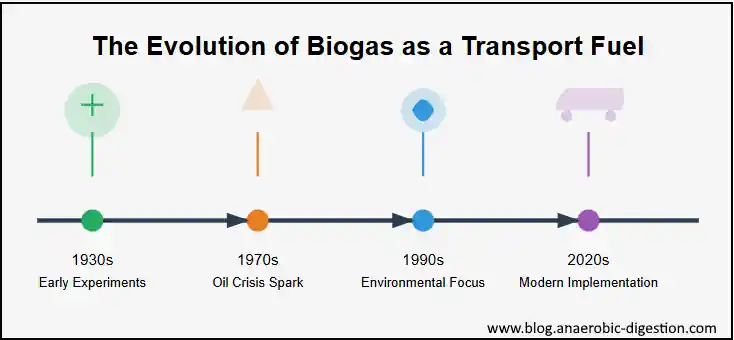
Looking at each of these, in turn, helps to explain why biogas trucks and the necessary biomethane filling stations, to refuel them will soon become commonplace:
Purification Efficiency:
- Past: Early biogas purification methods often resulted in significant methane losses and required complex, energy-intensive processes.
- Present:
- Advanced membrane technologies have revolutionized biogas upgrading.
- These membranes selectively allow methane to pass through while filtering out impurities like carbon dioxide, hydrogen sulphide, and water vapor.
- Achieving >98% methane purity is now commonplace, making the resulting biomethane suitable for various applications such as grid injection, vehicle fuel, and industrial use.
Cost Reduction:
- Past: High capital and operational costs associated with biogas production were a major barrier to widespread adoption.
- Present:
- Significant advancements in digester design, process optimization, and automation have led to a substantial decrease in processing costs.
- This includes:
- Improved feedstock handling and pre-treatment
- More efficient digester operation
- Reduced energy consumption for heating and mixing
- Optimized biogas upgrading processes
These cost reductions have made biogas production more economically viable, particularly for smaller-scale operations.
Scale Optimization:
- Past: Biogas production was often limited to large-scale industrial facilities due to technological constraints and economic factors.
- Present:
- Technological advancements have enabled the development of efficient and cost-effective biogas plants across a wide range of scales.
- This includes:
- Small-scale digesters for farms and households
- Medium-scale plants serving communities or industrial parks
- Large-scale industrial facilities processing significant volumes of organic waste
This scalability allows for decentralized biogas production and better integration with local energy needs.

Overall, these advances have significantly enhanced the feasibility and sustainability of biogas production, making it a more attractive option for renewable energy generation and waste management.
This means that few, if any, barriers remain to hold back the proliferation of many more biogas trucks, and all other heavy transport will tend to move toward biomethane transport.
Vehicle Technology Progress
Key improvements in biogas trucks over the last 15 years include:
- Fuel Storage: Lightweight composite tanks with higher capacity.
- Engine Efficiency: Near-parity with diesel engines.
- Range: Modern biomethane trucks achieve 800–1,000 km per fill.
2025: A Milestone Year for Biomethane Trucks?
Biomethane-powered vehicles will enter the mainstream in 2025, transforming the biogas truck industry. Key breakthroughs include:
| Category | Development |
|---|---|
| Manufacturing | Biomethane options in standard product lines; reduced production costs; and standardized maintenance. |
| Market Impact | Lower acquisition costs; simplified fleet integration; expanding refuelling infrastructure. |
Environmental and Economic Benefits
Environmental Gains
The environmental case for biogas trucks remains robust:
- Emission Reductions: Updated analyses reaffirm CO2 savings of up to 200%.
- Circular Economy: Integration with waste management reduces environmental impact.
Emission Reductions: Updated Analyses Reaffirm CO₂ Savings of Up to 200%
One of the standout benefits of biogas trucks lies in their ability to drastically reduce greenhouse gas emissions compared to conventional diesel-powered vehicles. Recent lifecycle analyses reaffirm that biomethane-powered trucks can achieve CO₂ savings ranging from 75% to an impressive 200% when factoring in the entire production and usage cycle.
How is this possible? Unlike fossil fuels, which release ancient carbon stored for millions of years, biomethane is derived from organic waste such as agricultural residues, food waste, and manure. This process is considered carbon-neutral—or even carbon-negative in some cases—because the methane captured and converted into fuel would otherwise escape into the atmosphere as a potent greenhouse gas.
Take manure, for example. If left untreated, the organic matter will stand for months in farm slurry lagoons while it releases methane, which has 25 times the global warming potential of CO₂ over a 100-year period. By capturing this methane and using it as fuel, not only do we prevent these harmful emissions, but we also displace the need for diesel, which is a fossil fuel and emits large amounts of CO₂ during combustion.
Moreover, advancements in anaerobic digestion and biogas upgrading have further reduced emissions associated with the production process. Modern plants now achieve methane purity levels of over 98%, ensuring clean combustion and minimal release of pollutants.
The end result is a transport fuel that dramatically outperforms fossil fuels, both in terms of carbon footprint and overall environmental impact.
Economic Advantages of Biomethane Trucking
Cost stability and incentives drive adoption:
- Reduced upfront premiums when buying biogas trucks, due to standardization.
- Stable fuel costs compared to volatile diesel prices.
- Carbon pricing policies are being introduced in many countries that favour low-emission solutions like heavy transport powered by biomethane vehicles.
Biogas Truck Fuel Infrastructure Expansion
A growing network of biomethane refuelling stations is planned that supports the adoption of biogas trucks and these are also known as “biomethane trucks”:
- Strategic Placement: Along major transport corridors.
- Integration: Compressed biomethane (rCNG) is compatible with existing natural gas systems.
Future Projections and Regional Developments for Biogas Truck Growth
Market Growth
- 500% sales growth in biomethane trucks projected by 2030.
- Major fleets aiming for 50% biomethane adoption by 2028.
Production Capacity
- Over 200 new biogas plants are planned in Europe by 2028.
- Municipal and agricultural partnerships boost local production.
Regional Examples
| Region | Initiative |
|---|---|
| Nordic Corridor | 50 biomethane stations connecting Denmark, Sweden, and Norway. |
| UK Circular Plan | Municipal waste is converted into local biomethane for fleets. |
| German Network | 100+ farms collaborating on decentralized biogas production. |

Challenges and Opportunities
Current Challenges
- Scaling Production: Securing long-term waste feedstock contracts.
- Example: UK’s Waitrose partners with biomethane producers.
- Infrastructure Gaps: Expanding rural coverage with mobile refuelling.
- Storage Optimization: Research into adsorbent materials for compact tanks.
Growth Opportunities
- Cost Savings: UK logistics firms report 45% lower fuel costs.
- Carbon Credits: Some Danish fleets earn €500,000 annually from carbon trading. The EU has its own carbon trading system, and hopefully, it will not be long before the UK ETS Scheme (the UK form of carbon trading) allows benefits from biogas use
- Waste Utilization: Some Italian cities have converted 100% organic waste into fuel already.
Strategic Recommendations Toward Using Biogas as a Main Transportation Fuel
To maximize adoption, the UK biogas industry will focus on:
- Infrastructure: Develop refuelling hubs along high-traffic routes.
- Production: Encourage waste partnerships and distributed production.
- Market Support: Offer incentives and create specialized financing schemes.
Summary
The 2025 milestone validates the early promise of biomethane trucks. With improved technology, reduced costs, and standardized availability, biogas trucks are set to drive sustainable transport forward. The challenge now lies in scaling biogas production to meet growing demand.
Biomethane trucks offer an unparalleled opportunity to reduce emissions, harness renewable resources, and transform heavy transportation for a cleaner future.
Financial Incentives
- Tax Benefits: Enhanced capital allowances for biomethane vehicles
- Grants: Infrastructure development funding programs
- Example: French “Biomethane Transition Fund” providing 40% capital cost support
Innovation Opportunities
- Digital Integration
- Smart Monitoring: Real-time biomethane quality tracking
- Logistics: AI-powered refueling route optimization
- Case Study: German logistics company's blockchain-based biomethane trading platform
Market Evolution Indicators
- Supply Chain Development
- Component Manufacturing: 30% annual growth in specialized parts production
- Service Networks: Dealer certification programs for biomethane vehicles
- Training: Specialized technician programs in technical schools
International Collaboration
- Cross-border Initiatives
- EU “Biomethane Highway” connecting 15 countries
- Knowledge-sharing platforms between operators
- Standardization efforts for fuel quality and safety
Strategic Recommendations
Based on current trends and challenges, key strategic focuses should include:
- Infrastructure Development
- Prioritize high-traffic corridors
- Develop hub-and-spoke refuelling networks
- Integrate with existing gas infrastructure
- Production Capacity
- Encourage distributed production networks
- Support agricultural cooperatives
- Develop waste collection partnerships
- Market Support
- Implement transitional incentives
- Establish knowledge-sharing networks
- Create specialized financing programs
The transition to standardized biomethane vehicles represents a pivotal moment in sustainable transport.
Success will depend on coordinated effort across all sectors, from production to end-use, supported by consistent policy frameworks and market mechanisms.
Conclusion – From Waste to Wheels: The Remarkable Rise of Biogas-Powered Transport
The 2025 milestone of major manufacturers offering standardized biomethane vehicles validates the potential identified in 2006. This development positions biomethane as a mainstream alternative fuel, particularly for heavy transport applications.
The combination of environmental benefits, improved economics, and standardized vehicle availability creates a strong foundation for rapid market growth, limited primarily by biogas production capacity.


